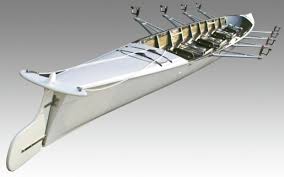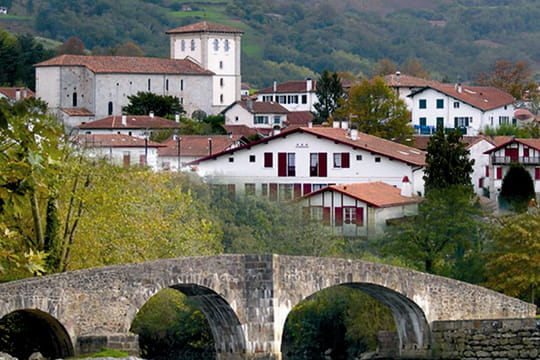 8th May 2012. Much of France is closed down today as it's VE day. I stopped at the Monument aux Morts (right) on my way to buy a baguette as there was a ceremony imminent - a contingent of élite 1er RPIMa soldiers (Special Forces) from their citadelle across the Adour were present as well as anciens soldats with their standards from former times and conflicts. At previous ceremonies like this that I've seen here, the music was presented via a CD player or a very small number of musicians. Today was different - a military band did the honours and, as usual, the dry rattle of the sidedrums and the blaring trumpets during the Marseillaise sent a shiver through me..
8th May 2012. Much of France is closed down today as it's VE day. I stopped at the Monument aux Morts (right) on my way to buy a baguette as there was a ceremony imminent - a contingent of élite 1er RPIMa soldiers (Special Forces) from their citadelle across the Adour were present as well as anciens soldats with their standards from former times and conflicts. At previous ceremonies like this that I've seen here, the music was presented via a CD player or a very small number of musicians. Today was different - a military band did the honours and, as usual, the dry rattle of the sidedrums and the blaring trumpets during the Marseillaise sent a shiver through me..More stirring stuff from the Biarritz-based Basque choir Oldarra:
This clip originates from across the border in the Spanish Basque country..
I think you have to be Basque to appreciate some aspects of Basque culture..
I've mentioned 'Makhilas' before here but without really going on to explain what they're all about. A Makhila is a traditional Basque walking stick - but with a difference..! They're made of medlar wood (néflier in French) - a highly resistant, dense and durable hardwood that is often engraved. The lower part is finished with a decorative ferrule while the top part is fitted with a hand grip - often of tightly woven leather - topped by an ornamental pommel. A quick twist of the handgrip removes it to expose a short spike - thus converting the walking stick into an instant weapon. They are hand-made and made-to-measure - the craftsman taking into account the owner's height and weight.
No two are the same. They are highly prized and often offered as presentation pieces to mark a special occasion.
The wood of the slow growing Medlar tree is hard, even, fine grained and polishes well and is reported to be practically unbreakable. The wood has practically no commercial value as the tree stays relatively small and its branches aren't necessarily straight. Because the wood is hard, it has been used for spear points, hunting and warfare clubs, fighting sticks and making windmill parts - especially some of the wooden gearwheels. The process of making a Makhila starts in the spring with the carving of lines on a living branch of a tree that's at least 15 years old before harvesting the branch in the winter. Over the summer, the design of the carving expands with the growth of the tree.
 The bark is removed and the branch straightened with the aid of the heat of a kiln - this operation requires a great deal of skill. The wood is then allowed to dry naturally for several years after which the wood is stained using family techniques handed down for generations. The stick is finished with made-to-measure decorative fittings which are cut, carved, braced and decorated pieces of brass, silver, German silver or gold. As noted above, the handle is either metal or tightly plaited with leather strips and finished with a horn or worked metal pommel. The handle can be easily removed to reveal a forged steel spike. Traditional Makhilas are inscribed with a short verse of the owner's own symbolism in Basque. The making of a Makhila is a tradition passed down from father to son and there are very few Makhila makers left. I know of only two - one here in the centre of Bayonne and another at Larressore.
The bark is removed and the branch straightened with the aid of the heat of a kiln - this operation requires a great deal of skill. The wood is then allowed to dry naturally for several years after which the wood is stained using family techniques handed down for generations. The stick is finished with made-to-measure decorative fittings which are cut, carved, braced and decorated pieces of brass, silver, German silver or gold. As noted above, the handle is either metal or tightly plaited with leather strips and finished with a horn or worked metal pommel. The handle can be easily removed to reveal a forged steel spike. Traditional Makhilas are inscribed with a short verse of the owner's own symbolism in Basque. The making of a Makhila is a tradition passed down from father to son and there are very few Makhila makers left. I know of only two - one here in the centre of Bayonne and another at Larressore.Scroll forward to 10:44 on this next clip to see Makhilas being made at nearby Larressore:
I noticed with a start this morning that the Caisse d'Epargne building (that I mentioned in post # 182) in the historic centre of Bayonne is being demolished! The mayor must obviously be an avid reader of the blog!
Changing the subject just a little, I noticed the other day that McDonalds here are now selling a McBaguette!
It's 28 in the shade here this afternoon - where did that come from..?☺
This week's special offer is a free trip over the Pays Basque in a hot air balloon (or un vol en montgolfière as it's known here). It's best in full screen:
This week's special offer is a free trip over the Pays Basque in a hot air balloon (or un vol en montgolfière as it's known here). It's best in full screen:
10th May 2012. Forecast to be 32 this afternoon - the temp's soaring past 29 in the shade at the time of writing (1pm)..
Thirty minutes ago at 5pm it was 33½° in the shade in the garden.. phew! The dog's re-discovered the pleasure of lying spread-eagled in all his favourite cool places in the house.
12th May 2012. We had the house double glazed 2-3 years ago by a charming couple who run a company based at Saint-Jean-de-Luz. (highly recommended) They came and measured up before returning a few weeks later to fit the new windows. They finished in 1½ days and left the house spotless. A couple of weeks ago we received an invitation from them to an apéro-dinatoire to mark their 1st year of business at their second shop they've opened at nearby Anglet. As they know we don't require any more windows it was just a nice friendly goodwill gesture. We went there yesterday evening - there must have been 20 or so other happy customers - and we had a very pleasant evening.. There was a beautifully presented selection of food - plus various drinks - soft drinks, wine, rhum-based punch, whisky, pastis etc etc. When we left, they gave us a complimentary umbrella and a sports cap.
 This morning I was all set for an outing in a beautiful Swiss-built wooden shell coxed IV.. we'd got as far as putting the boat on the water and we were sitting in it when someone had a technical problem which meant we had to change boats. The only boat remaining was a glass fibre yolette (left). Wider and heavier than our more usual boats, these are what beginners here usually start in. I have to say I wasn't looking forward to the sortie but once we'd heaved it off its rack, put it on the water and set off I was pleasantly surprised. We were a mixed ability crew - which I approve of - two of the guys had only taken up rowing last October. I was at 'stroke' and as we headed off up-river - the last boat to leave the pontoon by some margin - I was immediately impressed by how solid the boat felt and soon the boat was running free in the water between strokes with that distinctive sound.
This morning I was all set for an outing in a beautiful Swiss-built wooden shell coxed IV.. we'd got as far as putting the boat on the water and we were sitting in it when someone had a technical problem which meant we had to change boats. The only boat remaining was a glass fibre yolette (left). Wider and heavier than our more usual boats, these are what beginners here usually start in. I have to say I wasn't looking forward to the sortie but once we'd heaved it off its rack, put it on the water and set off I was pleasantly surprised. We were a mixed ability crew - which I approve of - two of the guys had only taken up rowing last October. I was at 'stroke' and as we headed off up-river - the last boat to leave the pontoon by some margin - I was immediately impressed by how solid the boat felt and soon the boat was running free in the water between strokes with that distinctive sound.
I forgot to mention that the previous Saturday I'd been invited to attend the annual meeting of an association concerned with the Comet WWII escape line that operated successfully in this area. The meeting was held in Hendaye - situated right on the border with Spain - as a gesture to those travelling from San Sebastian. I'm now a committee member. Planning for this year's commemoration is virtually complete with just a few minor tweaks resulting from suggestions raised at the meeting. This year, instead walking over the original mountain crossing route that ran from Ciboure, Urrugne, Bidegain Berri farm, Bidassoa, Sarobe farm, Renteria that was used by Comet up to early 1943, we'll use one of the inland routes (via Anglet-Sutar, Ustaritz, Larressore, Espelette, Dantxaria) that were adopted after the arrests at Bidegain Berri in January '43. This has been thoroughly researched with the families involved and I believe it follows closely the inland routes used later on in the war. In a separate initiative, Philippe Connart, Cheryl Padgham and Geoff Warren conducted their own research and it will be interesting to see how similar the routes turn out to be.
In conjunction with the descendants of those courageous wartime passeurs, the committee has arranged a splendid long weekend that I'm sure all attendees will enjoy. Apparently, the final day sees a climb steeper than anything experienced on the more traditional route. This should put to rest any lingering fears 'out there' that this year's commemorative march will be but a pale shadow of the traditional Ciboure route.
Thirty minutes ago at 5pm it was 33½° in the shade in the garden.. phew! The dog's re-discovered the pleasure of lying spread-eagled in all his favourite cool places in the house.
12th May 2012. We had the house double glazed 2-3 years ago by a charming couple who run a company based at Saint-Jean-de-Luz. (highly recommended) They came and measured up before returning a few weeks later to fit the new windows. They finished in 1½ days and left the house spotless. A couple of weeks ago we received an invitation from them to an apéro-dinatoire to mark their 1st year of business at their second shop they've opened at nearby Anglet. As they know we don't require any more windows it was just a nice friendly goodwill gesture. We went there yesterday evening - there must have been 20 or so other happy customers - and we had a very pleasant evening.. There was a beautifully presented selection of food - plus various drinks - soft drinks, wine, rhum-based punch, whisky, pastis etc etc. When we left, they gave us a complimentary umbrella and a sports cap.
I forgot to mention that the previous Saturday I'd been invited to attend the annual meeting of an association concerned with the Comet WWII escape line that operated successfully in this area. The meeting was held in Hendaye - situated right on the border with Spain - as a gesture to those travelling from San Sebastian. I'm now a committee member. Planning for this year's commemoration is virtually complete with just a few minor tweaks resulting from suggestions raised at the meeting. This year, instead walking over the original mountain crossing route that ran from Ciboure, Urrugne, Bidegain Berri farm, Bidassoa, Sarobe farm, Renteria that was used by Comet up to early 1943, we'll use one of the inland routes (via Anglet-Sutar, Ustaritz, Larressore, Espelette, Dantxaria) that were adopted after the arrests at Bidegain Berri in January '43. This has been thoroughly researched with the families involved and I believe it follows closely the inland routes used later on in the war. In a separate initiative, Philippe Connart, Cheryl Padgham and Geoff Warren conducted their own research and it will be interesting to see how similar the routes turn out to be.
In conjunction with the descendants of those courageous wartime passeurs, the committee has arranged a splendid long weekend that I'm sure all attendees will enjoy. Apparently, the final day sees a climb steeper than anything experienced on the more traditional route. This should put to rest any lingering fears 'out there' that this year's commemorative march will be but a pale shadow of the traditional Ciboure route.















